#etienne giradot
Explore tagged Tumblr posts
Text
The Whole Town's Talking

John Ford’s THE WHOLE TOWN’S TALKING (1935, TCM, Criterion Channel, YouTube) has been called the director’s only screwball comedy. That depends on how serious you like your screwballs. The film manages to poke fun at romantic comedy, gangster films and the notion of celebrity, but it lacks the consistently pixilated charm of the best comedies of Frank Capra, Howard Hawks and Preston Sturges.
Edward G. Robinson stars as Jonesy, a clerk with a crush on tough-talking colleague Bill (Jean Arthur). When a lookalike gangster, Killer Mannion, escapes from the pen, the police mistakenly take Jonesy and Bill into custody. Realizing their mistake, they give him a letter explaining that he’s not the gangland chief, which brings the real crook to Jonesy’s apartment and sets up a string of mistaken identity gags at the same time Jonesy becomes a local hero simply because of his face.
The film’s main screwball element is the liberation of Jonesy. His boss (Paul Harvey), who wants to use the publicity to promote his advertising firm, gets him drunk, leading Jonesy to confess his love for Bill. Later he finds an outlet for his own repressed anger by impersonating the crook. Robinson has the wisdom to play this almost totally straight. He doesn’t reach for comic effect, which makes him both very real and very funny. Some of his reactions, as when Harvey asks him to sign his son’s autograph book right under Mae West’s signature, are priceless. When Jonesy meets Mannion, Robinson differentiates the two so simply and clearly you can easily tell which is which, even when they start impersonating each other. When the focus isn’t on Jonesy, however, the film often gets too serious for its own good. There are a pair of comic policemen (Arthur Hohl and James Donlan), but the authority figures aren’t very funny, so their scenes start making the film look more like a real gangster picture. Ford needed to throw a Billy Gilbert or an Edgar Kennedy into the mix to keep things buoyant. And there are also two murders played relatively straight that seem to have wandered in from another film.

That didn’t bother contemporary audiences, and the picture was a big hit that revitalized Robinson’s career by letting him poke fun at the gangster roles in which he had become typed. It also marked Arthur’s rise to stardom, and she’s quite wonderful, particularly when Bill spins fanciful yarns about her exploits when the police think she’s Mannion’s moll. There’s also funny work from Etienne Giradot as Jonesy’s fussy supervisor and Donald Meek as the man who first turns Jonesy in and keeps trying to collect the reward. When the two bump into each other at police headquarters, it’s thirty seconds of character actor heaven.
0 notes
Photo



Twentieth Century (1934)
“In this 1934 romp, Carole Lombard is embroiled in a diva-off with the exceptional John Barrymore, whose disposition’s as askew as his salt ’n’ pepper mane and who insists on rolling his Rs and speaking with the level-four volume of a Shakespearean great. And Lombard holds her own, and is arguably even better than her co-star. In their scenes together, it’s like witnessing a tug of war that’s end game is figuring out just who’s going to get the belly laugh.”
http://bit.ly/2z5qVmI
#twentieth century#1930s#30s#howard hawks#carole lombard#john barrymore#walter connolly#roscoe karns#ralph forbes#charles lane#etienne giradot#twentieth century 1934#twentieth century movie#black and white#vintage#old hollywood#classic hollywood#vintage hollywood#hollywood golden age#screwball#screwball comedy
14 notes
·
View notes
Text
HERE COMES THE JUDGE!
Oyez! Oyez! All Rise for the Honorable Jurists of the Lucyverse!

“Lucy the Conclusion Jumper” (1968)
APPROACH THE BENCH

Clarence Wilson played a Judge in one of Lucille Ball’s early films, Blood Money (1933). It was the first of three of his Judge roles.

C. Montague Shaw played the Judge in Jealousy (1934), a film in which Lucille Ball has a bit part. He also played a Judge (not the legal kind) in 1935′s Carnival, also with Ball, as well as eight more screen Judges!

Lucille Ball played a Beautician and Edward LeSaint played a Judge (both uncredited) in Fugitve Lady (1934). Of LeSaint’s more than 325 screen credits, more than 60 were as Judges; nine in 1939 alone. They included the cult classic Reefer Madness (1936) and a film titled A Woman is the Judge (1939).
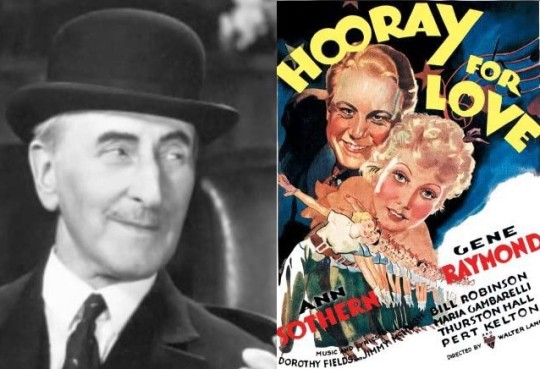
Etienne Giradot played Judge Peterby and Lucille Ball was an uncredited chorine in Hooray for Love (1935). He went on to play Judges in two more films.

Howard Hickman played 28 Judges from 1934 to 1941, including Judge Jonathan Travers in the Lucille Ball film Next Time I Marry (1938).

In 1940, Lucy and Desi’s elopement required two Judges! Probate Judge Harold L. Knapp waived the five-day wait required by Connecticut law, and Justice of the Peace John P. O'Brien performed the ceremony at the Byram River Beagle Club at noon on Saturday, November 30, 1940. Some aspects of the event were fictionalized on “I Love Lucy” in 1952 with Irving Bacon playing Justice of the Peace Mr. Willoughby.
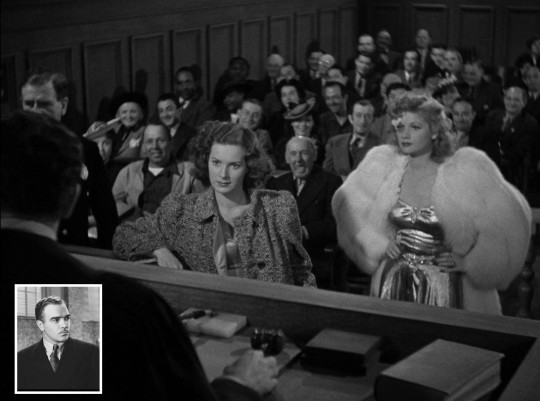
Walter Abel played the Judge in Dance, Girl, Dance (1940). In 1935, he was seen in the film The Three Musketeers with Lucille Ball. Abel also played a Judge in his final television role in 1976.
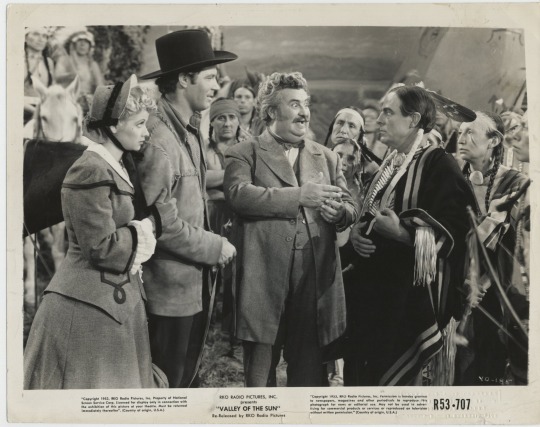
In Valley of the Sun (1942), Lucille Ball played Christine Larson and Billy Gilbert played Judge Homer Burnaby. Gilbert was also seen with Ball in I Dream Too Much (1938) and Joy of Living (1938).
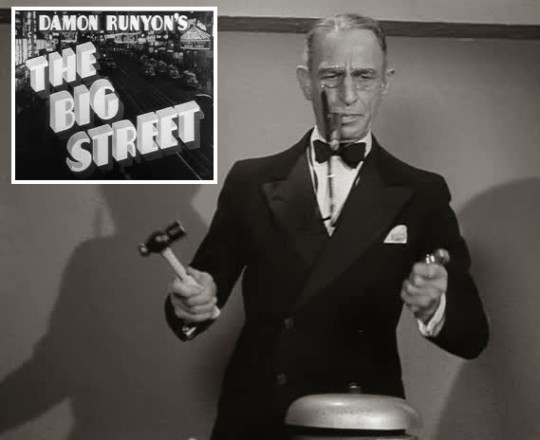
Also in 1942, Ball played the lead in The Big Street in which Julius Tannen played Judge Bamberger. He also played a Judge in The Lady in Question (1940).
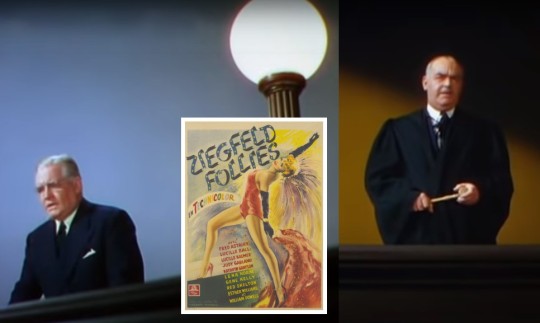
There were two Judges in the Lucille Ball film Ziegfeld Follies (1945), both in the segment titled “Pay the Two Dollars”. Judge #1 was played by Joseph Crehan, who later played the Detective in “The Great Train Robbery,” a 1955 episode of “I Love Lucy.” Of his 382 film and TV credits, more than a dozen were as Judges. Judge #2 was played by William B. Davidson, who was also seen with Ball in Roberta (1944) and Lover Come Back (1946). Coincidentally, Davidson’s final film was titled The Judge Steps Out (1948). He played a Judge in five films. One of his early films was titled Good Morning Judge (1928). The two Ziefeld Follies Judges do not appear in the same segment as Lucille Ball, “Here’s To The Ladies.”
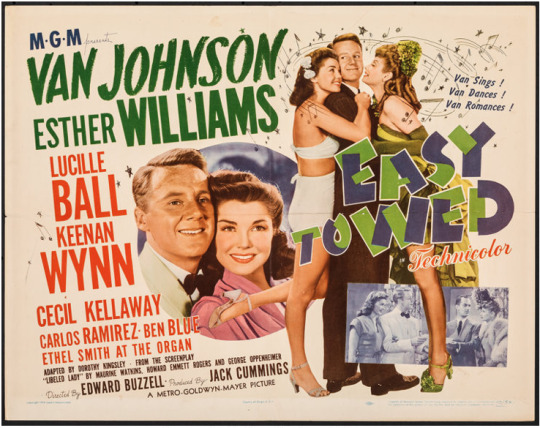
Walter Soldering and Joel Friedkin played Justices of the Peace (a Judge with limited jurisdiction, generally with the ability to perform marriages) in the Lucille Ball / Van Johnson film Easy To Wed (1946). Friedkin played a JOP in three other films and a Judge in eight! Soldering played four JOPs and six Judges.
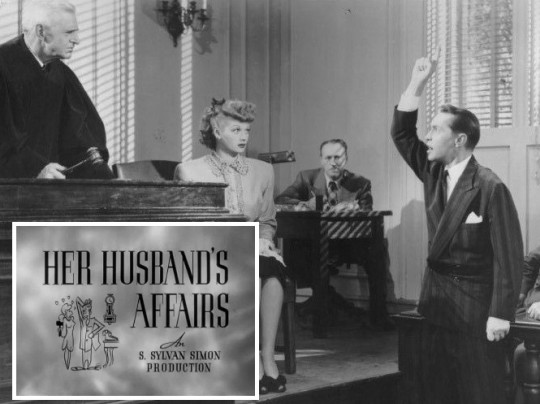
Selmer Jackson played the Judge in the Lucille Ball / Franchot Tone film Her Husband’s Affairs (1947). His first time playing a Judge was in the Jimmy Durante film Carnival (1935), in which Lucille Ball played a nurse. Twenty more Judge roles followed, including Mighty Joe Young (1949). Ball did the script for radio in 1949, although the actor playing the Judge went uncredited and unidentified.
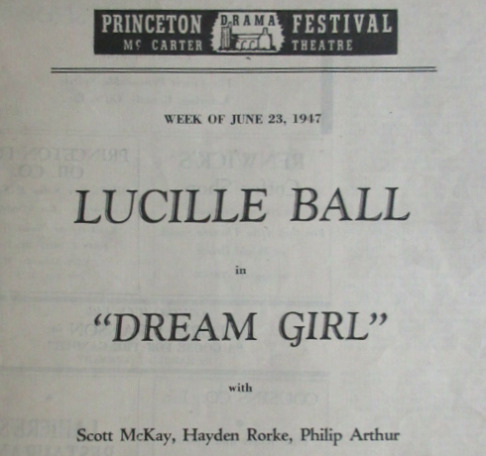
Edward Forbes played the Judge in Lucille Ball’s tour of the stage play Dream Girl (1947-48) which began in Princeton, New Jersey.

The film What My Next Husband Will Be was announced in June 1948 as a vehicle for Lucille Ball. It wasn’t long before Ball had been assigned to Miss Grant Takes Richmond (see below) and the role was recast with Rosalind Russell. The title was changed to Tell It To The Judge (1949) and Russell’s character was changed from a Broadway star, to a Federal Judge.
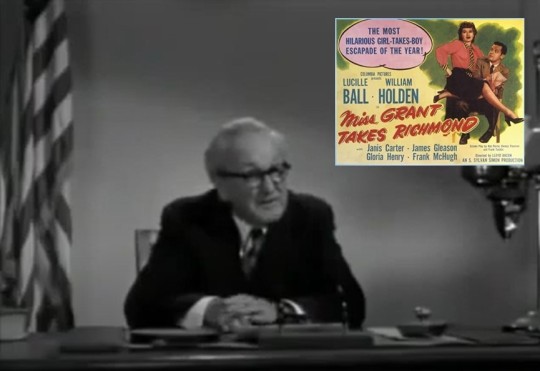
George Cleveland played Judge Ben Grant in Miss Grant Takes Richmond (1949) starring Lucille Ball and William Holden. The Judge is the uncle of Ellen Grant, the title character played by Lucy. This was Cleveland’s fifth film with Lucille Ball in four years. In 1954, Cleveland played a Judge on TV’s “Death Valley Days.”
IN RECESS
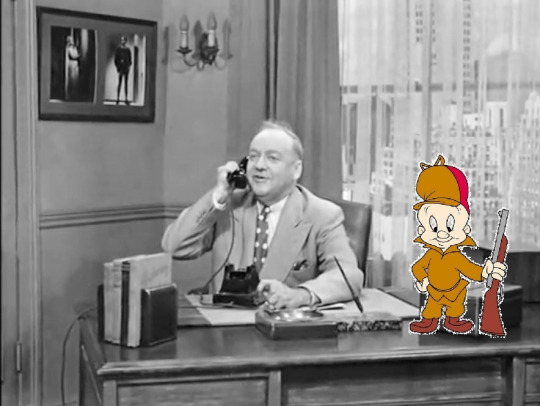
When Ball did Miss Grant on radio in 1950, the role of Judge Grant was taken by Arthur Q. Bryan, best known as the voice of Elmer Fudd. Bryan played Mr. Chambers, new owner of the Tropicana in “Ricky Loses His Voice” (1952).

Gale Gordon played Judge Skinner in the My Favorite Husband episode “Valentine’s Day” broadcast on February 11, 1949 on CBS Radio.
JUDGE: “There is no problem too big to solve. Into every life a little rain must fall. Every cloud has a silver lining, and it is always darkest before the dawn.” LIZ: “Well now that we’ve had the weather report, let’s get on with the case!”
Lucy ended up appearing before another Judge played by Gale Gordon on “The Lucy-Desi Comedy Hour” (see below).
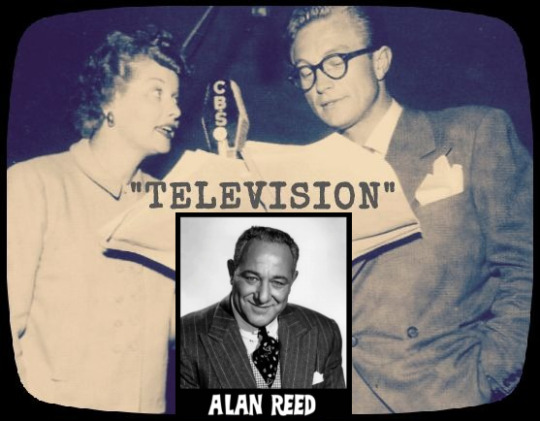
Alan Reed played Harry, the Judge in the My Favorite Husband episode “Television” broadcast on CBS Radio on June 17, 1949. Reed was best known as the voice of Fred Flintsone, but also appeared as a cafe owner in “Lucy Visits the White House” (1963).
FINAL ARGUMENTS
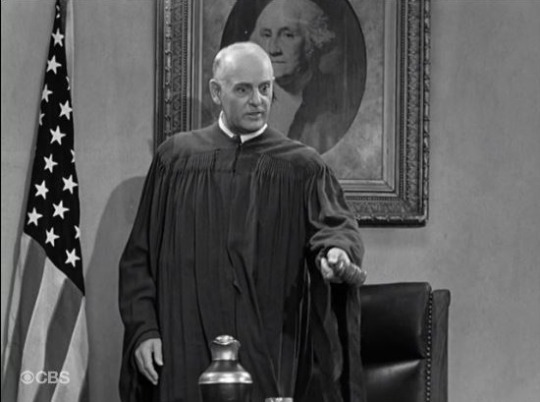
“Television” was the basis for the “I Love Lucy” episode “The Courtroom” (1952), in which the Judge was played by Moroni Olsen.
LUCY: “Well, Your Honor, now that I think of it, maybe it was Ricky who took the back off the set.” JUDGE: “Really?” RICKY: “Well, now that I think of it...yeah.”
Olsen played a Judge in three other films.
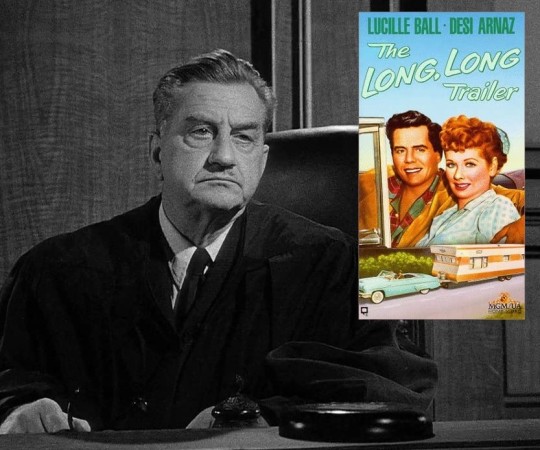
Fay Roop played a Judge in The Long, Long Trailer (1954). He also played a Judge on “Perry Mason”, “The Twilight Zone”, and several other TV shows and films.

Jorge Treviño played a Judge in the very first episode of “The Lucy-Desi Comedy Hour” “Lucy Takes a Cruise to Havana” (1957). Treviño had played Ricky's Uncle Alberto when “The Ricardos Visit Cuba” (1956).

Gale Gordon played Judge Phillips in “Lucy Makes Room for Danny” (1958), an episode of “The Lucy-Desi Comedy Hour” which was a cross-over with “Make Room for Daddy.”

Ernest Sarracino played the Danfield Judge in “Lucy and the Runaway Butterfly” (1963). After Lucy races through his courtroom with a butterfly net, the Judge explodes at the Prosecuting Attorney.
JUDGE: “Mr. McClay! This is nothing more than a cheap theatrical stunt designed to prejudice the jury! Remove this woman from the courtroom! Order in the court!” (Lucy’s net lands over the Judge’s head)
In 1966 he played an Italian Judge on “The Red Skelton Show.” He returned for two episodes of “Here's Lucy.”
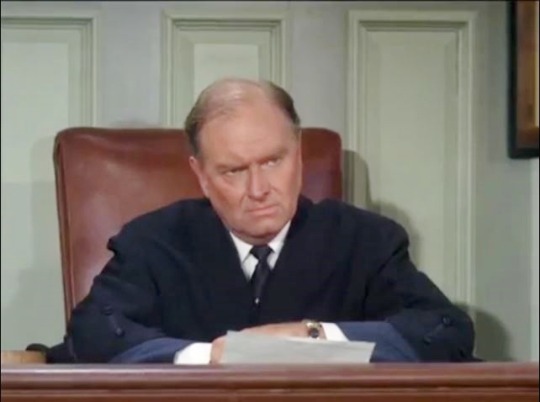
Busy character actor Parley Baer played humorless Judge Jack D. Kasten in “Lucy the Meter Maid” (1964). After Lucy attempt to re-enact the circumstance of ticketing Viv’s car, the Judge stops her mid-testimony.
JUDGE KASTEN: “Officer Carmichael, will you please explain the meaning of this travesty?” LUCY: “With the court’s indulgence, I’m trying to establish a time element.”
Baer played MGM’s Mr. Reilly in “Ricky Needs an Agent” (1955) and the furniture salesman Mr. Perry in “Lucy Gets Chummy with the Neighbors” (1957). This is the second of his five appearances on “The Lucy Show,” including another Judge! He also made two appearances on “Here’s Lucy.” He played a Judge on “The Joey Bishop Show” (1964) and “My Living Doll” (1965), both filmed at Desilu Studios. In addtion, he played a Judge on a dozen other film and TV shows.

Harry Holcombe played a Judge in Yours, Mine and Ours (1968) starring Lucille Ball and Henry Fonda. Holcombe played Judges in 18 film and TV shows, including two episodes of “Perry Mason.” He did background work on “Here’s Lucy,” including the series finale, “Lucy Fights the System” (1974).

John McGiver played the Judge in “Lucy is Her Own Lawyer” (1964).
JUDGE: “Mrs. Carmichael. Is it absolutely necessary to have this incessant jumping back and forth? You’re making the Bench nervous.”
McGiver previously appeared on the series in “Lucy is a Kangaroo for a Day” (1962). He appeared opposite Lucille Ball as Mr. Babcock in the movie musical Mame (1974), a film that also featured a Judge (see below). He played five other Judges in films and TV shows, including Judge Thatcher in the 1973 musical Tom Sawyer.

Sid Gould played the Camden Cove Judge in “Lucy and the Soap Opera” (1966).
JUDGE: “Order in the court!” LUCY: “Hear me out, Your Honor!” MR. SHANNON: “Hear her out? Throw her out!”
A frequent supporting player on “The Lucy Show” and “Here’s Lucy,” Gould was Lucille Ball’s cousin by marriage to Gary Morton.

Parley Baer returned to play another Judge (this time with eyeglasses) when “Lucy Sues Mooney” in 1967.
JUDGE: “Ladies and gentlemen of the jury. Any lady who would admit to being over thirty must be telling the truth.” MR. MOONEY: “She wouldn’t be telling the truth if she admitted to being over forty!”
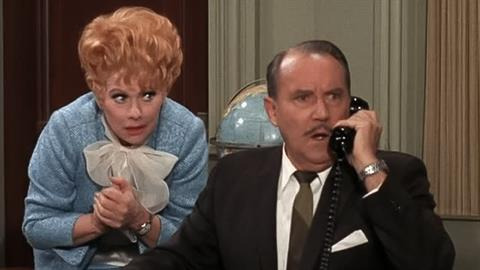
In “Lucy the Conclusion Jumper” (1968), Kim and her classmate Don are talking about keeping a household budget and visiting a city hall Judge for a school project. Lucy jumps to the conclusion they are going to get married! Lucy urges Harry to meet her at the Marriage License Office because she thinks Kim is about to elope with the supermarket box boy. When Harry hestitates, she says:
LUCY: “Well, she’s not going down there just to sing ‘Here comes the Judge! Here comes the Judge!’”

Two years later, in “Lucy and Sammy Davis Jr.” (1970), Sammy says his producer loves to sue and that his favorite words are...
“Here comes the Judge! Here comes the Judge!”
This is a catch-phrase popularized on “Rowan and Martin’s Laugh-In”, first spoken by comic Pigmeat Markham, and later by Davis. The NBC show’s second half hour aired opposite “Here’s Lucy.”
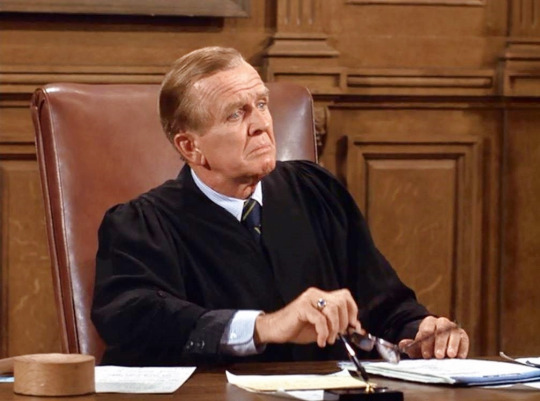
Hayden Rorke plays Judge Gibson in “Lucy and the Raffle” (1971). Coincidentally, the episode also features Gale Gordon and Sid Gould, former Lucyverse Judges. Rorke appeared on stage with Ball in Dream Girl (1947-48), a show which also featured a Judge (see above). He appeared on “I Love Lucy” as one of “The New Neighbors” (1952). Rorke was best known for his role as Dr. Bellows on “I Dream of Jeannie”.

John Wheeler played Judge Bregoff in Lucille Ball’s Mame (1974). In 1991, he played Judge Ciglio in the TV movie Runaway Father. The film also featured former Lucy Judge John McGiver (see above) as lawyer Babcock.

Lucy’s final jurist was Allan Rich as Judge Cameron Potter in “Lucy, Legal Eagle” (1986). This was the penultimate aired episode of a Lucille Ball sitcom. Rich started playing Judges on TV in 1976. In 1983, he played four TV Judges, including several appearances on “Hill Street Blues” and “Gimme A Break”. His first big screen Judge was in 1997′s Armistad. In all, Rich donned Judges robes two dozen times!
COURT ADJOURNED!

#Judge#Judges#I Love Lucy#Lucille Ball#The Lucy Show#Here's Lucy#My Favorite Husband#Life With Lucy#Allan Rich#John Wheeler#John McGiver#Moroni Olsen#Gale Gordon#Hayden Rorke#Laugh-In#Parley Baer#Sammy Davis Jr.#Sid Gould#Harry Holcombe#Ernest Sarracino#Jorge Trevino#Fay Roop#Alan Reed#George Cleveland#Edward Forbes#Desi Arnaz#Billy Gilbert#Walter Abel#Julius Tanner#Selmer Jackson
0 notes